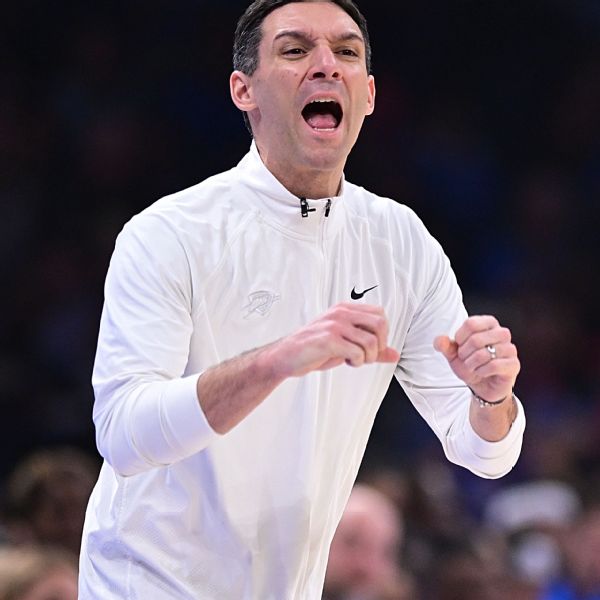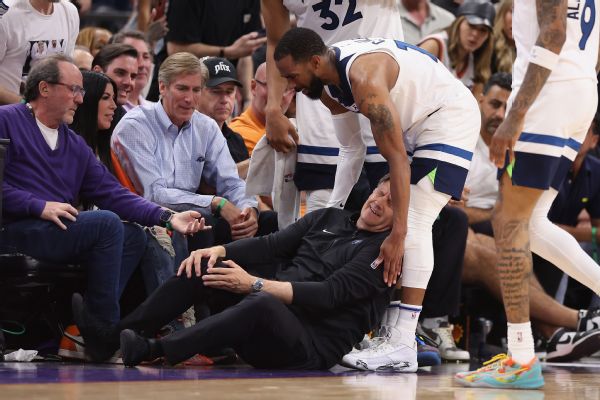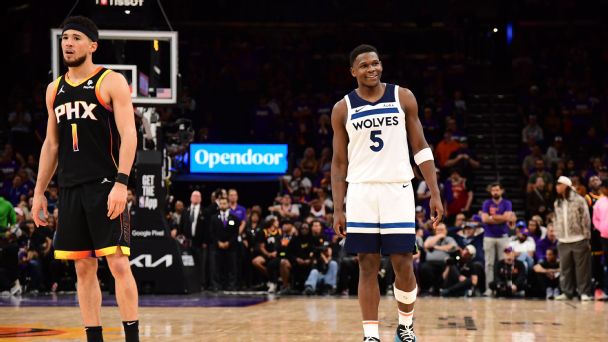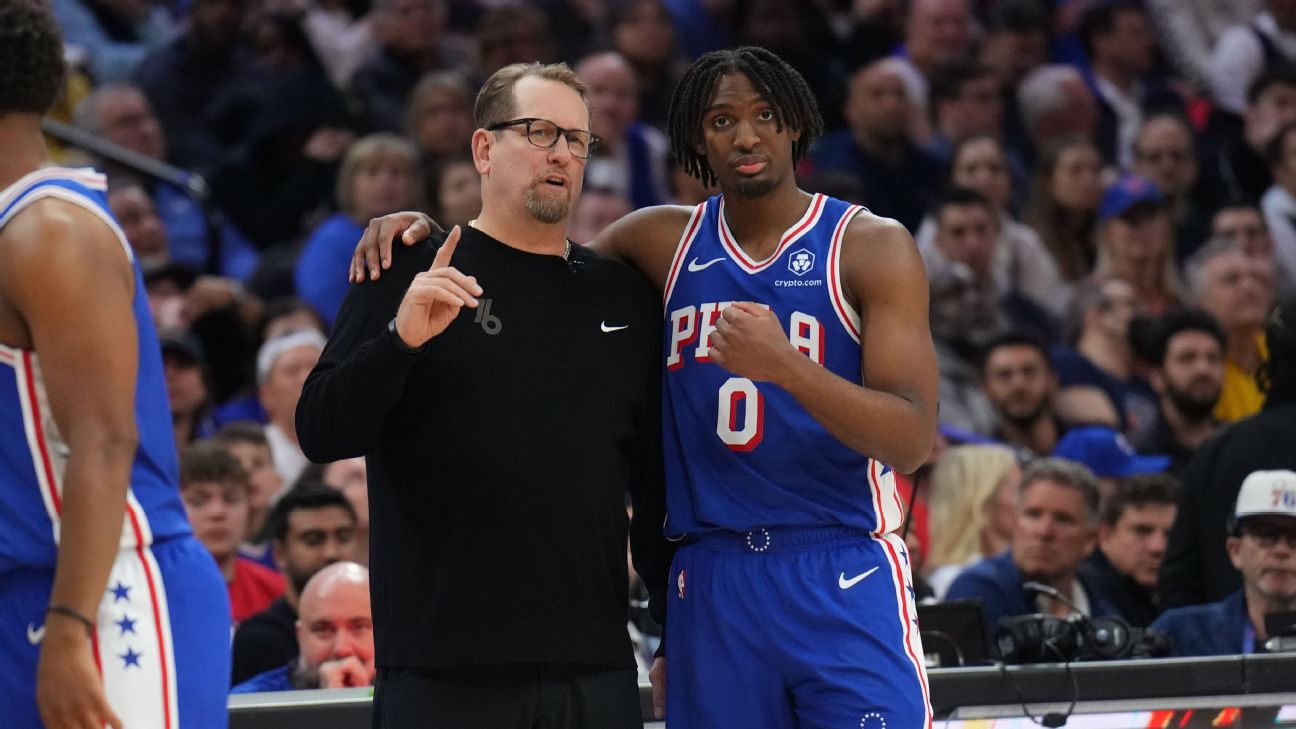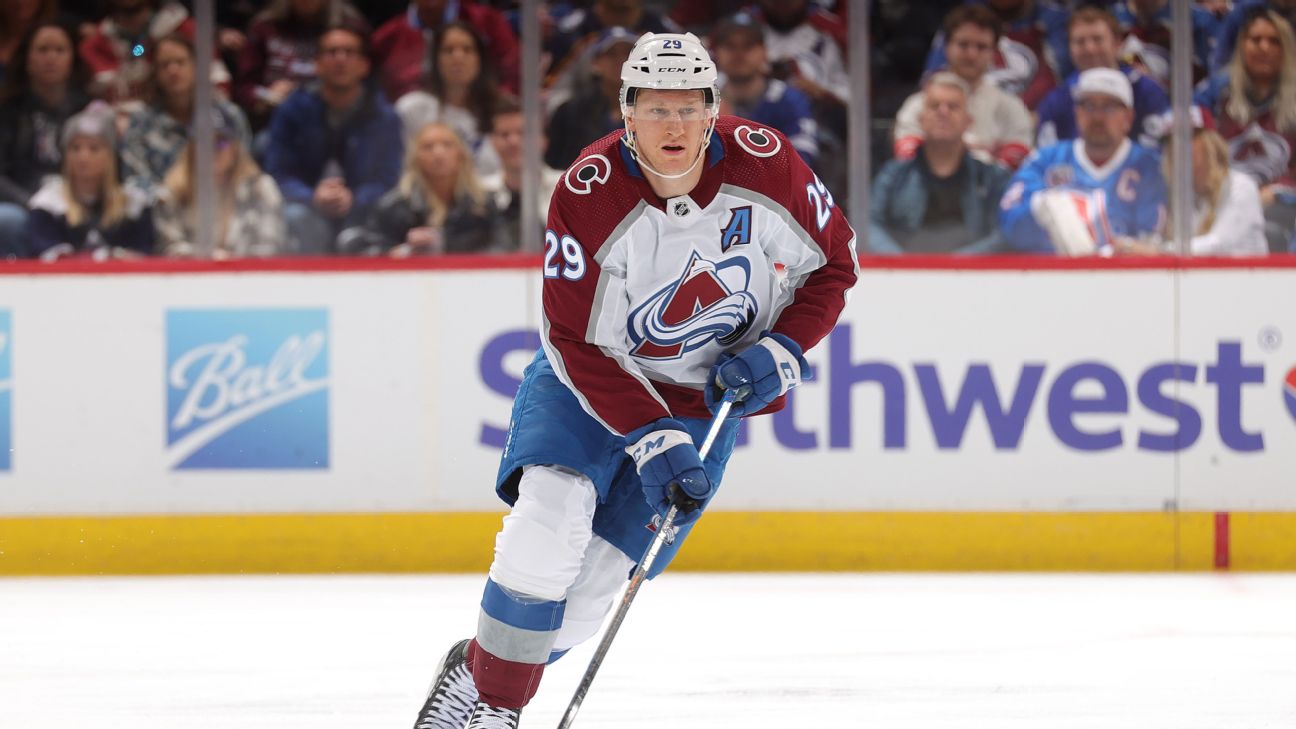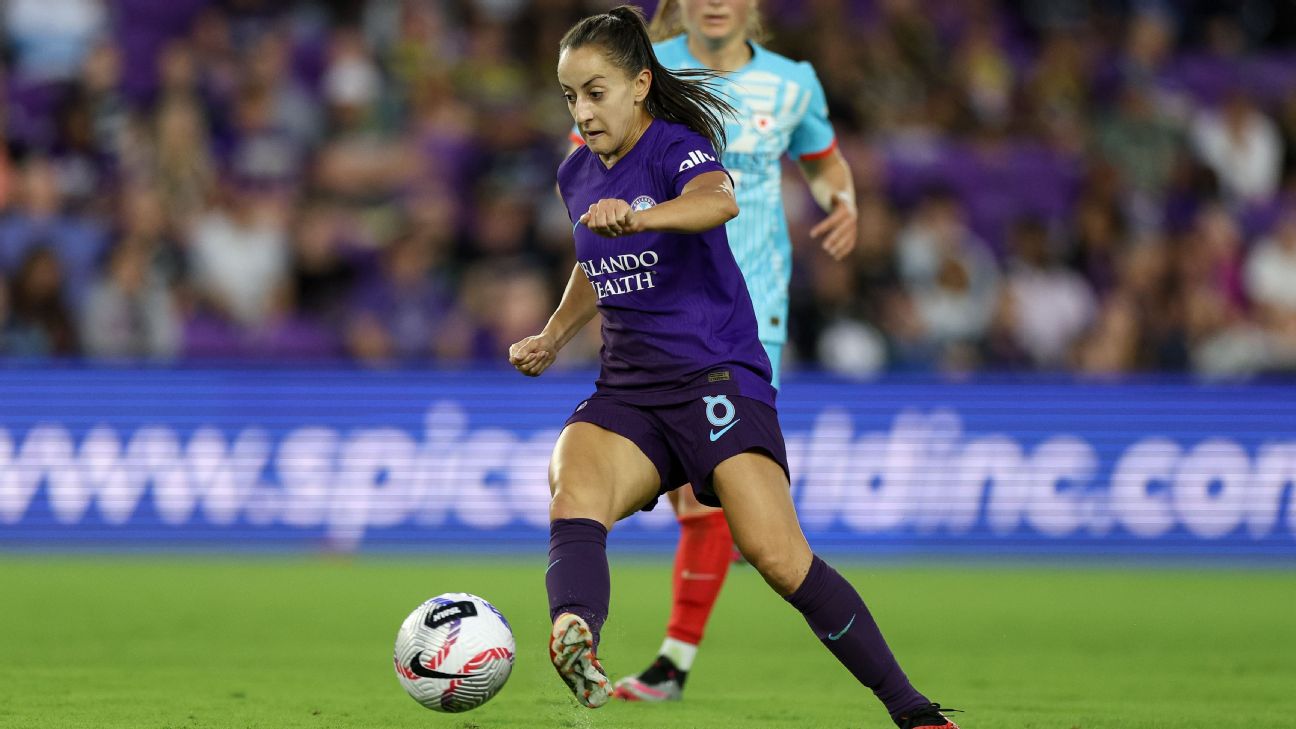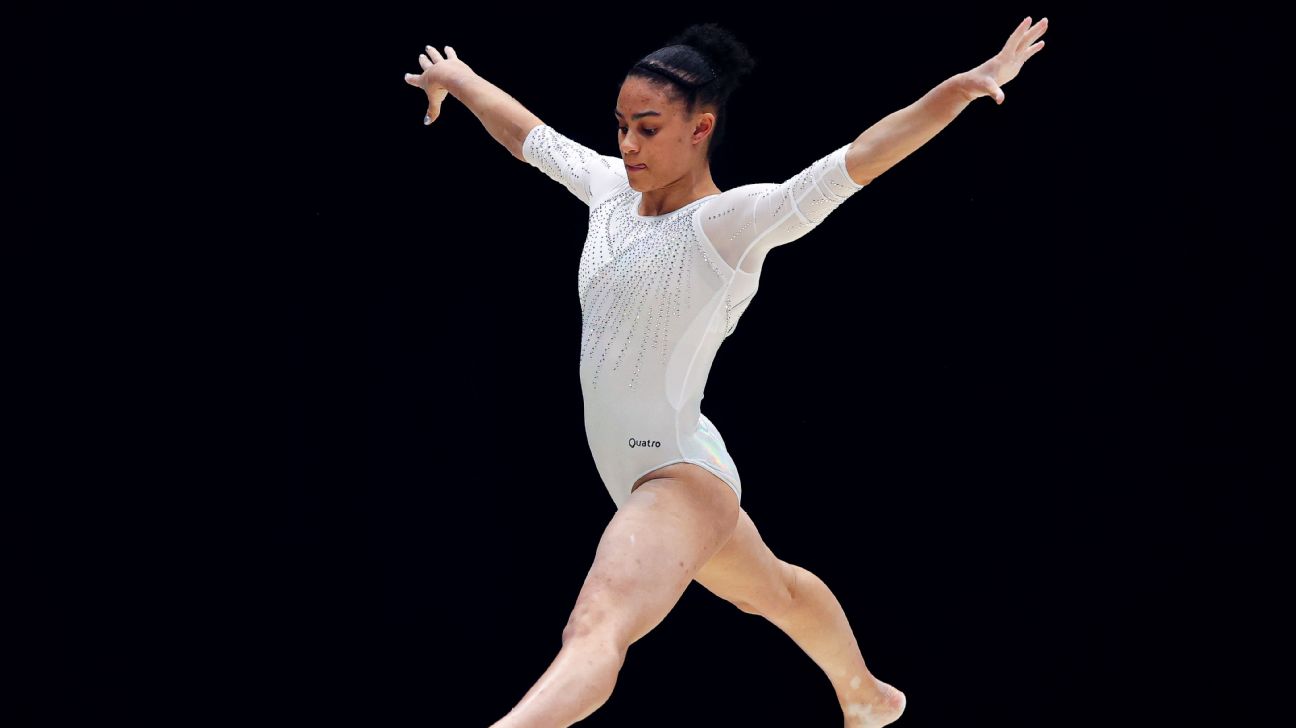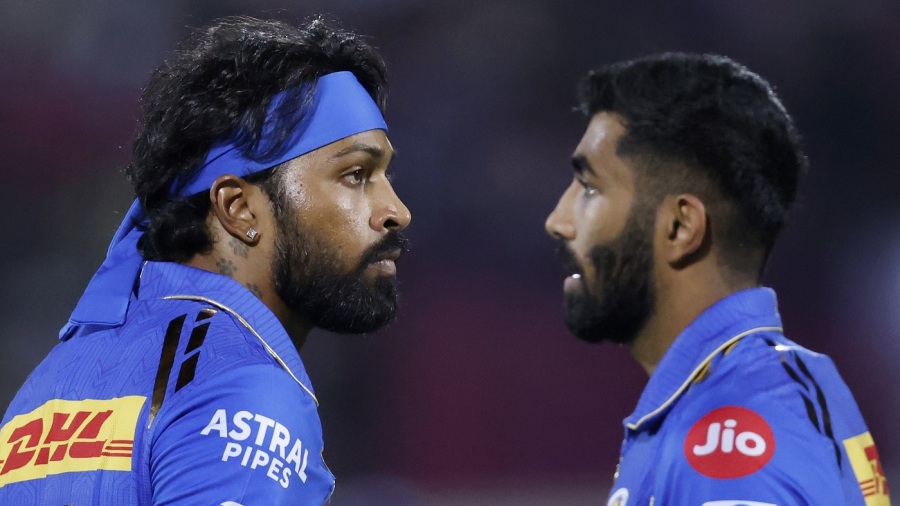![LFC woe 240415 [1296x729]](https://a.espncdn.com/photo/2024/0416/r1319534_1296x729_16-9.jpg)
How might the Cowboys use Ezekiel Elliott in 2024
Just over a week ago, Liverpool were on pace for a treble. They'd already won the Carabao Cup back in February and after a scoreless draw between Arsenal and Manchester City on March 31, they were alone in first place in the Premier League -- two points clear of the former, three of the latter. The betting markets, for the first time all season, installed them as favorites to win the Premier League.
Meanwhile, all season long they'd been favorites to win the Europa League. After easily progressing through the group stages and then obliterating Sparta Prague (11-2 on aggregate) in the round of 16, they'd become odds-on favorites to win it all. Ahead of the quarterfinals, the betting markets saw Liverpool as more likely to win the tournament than the seven other teams, combined.
Well, so much for that.
First, there was the thrilling 2-2 draw against Manchester United at Old Trafford. Then there was the shock 3-0 loss to Atlanta at Anfield. And then there was the 1-0 upset to Crystal Palace at Anfield. All of a sudden, it's all gone. Manchester City are two points ahead now, and Arsenal are still ahead in goal differential. Per ESPN Bet, Liverpool have just a 14% chance of overturning the deficit against Atalanta, and their odds of winning the league are right around the same level of likelihood.
Let's take a look at how -- and why -- it all might have fallen apart.
The shots didn't go inThis might be the most annoying kind of soccer analysis, but it's also usually the right one. And in terms of explaining why Liverpool have only one draw from their last three matches, this is the biggest factor, though it's not the only one.
With six games remaining, Liverpool are attempting 20.3 shots per game -- the third most of any Premier League team in the entire Stats Perform database, which extends back to 2008. While they're capable of moments of patient, settled possession, Liverpool's attacking approach this season has been to simply overwhelm their opponents with attempts on goal.
Liverpool have attempted at least 20 shots in 16 different league matches, tied for the most of any team in Europe with Bayern Munich. And naturally, they averaged 23 shots across their three most recent matches: 28 against Manchester United, 19 against Atalanta, and 21 against Crystal Palace.
It's not like they're just attempting shots from 35 yards away, either. Well, they are, to a point -- the average distance from goal on Liverpool's shots this season is 17.6 yards, tied for the farthest from goal of any team in the Premier League -- but that's an average and when you're creating so many shots, a handful of them are bound to be high-quality opportunities. In fact, only three teams (both Liverpool and Manchester City in 2021-22 and City in 2019-20) have created more Expected Goals (xG) per game than Liverpool's 2.3 this season.
This season, Liverpool have created at least 2.75 expected goals in 11 different games, once again tied for most in Europe with Bayern Munich. And over these past three matches, they've created an average of 3.05 expected goals: 3.67 against United, 2.6 against Atalanta, and 2.87 against Palace. Orange are goals, circles are sized by the xG value of the attempt:
The big problem, of course: those 9.14 xG were turned into just two actual goals.
They got stopped, they got blocked, and they missedOver the long run, the teams that create the most high-quality chances score the most goals. Remember this any time you see a bogus "big chances missed" stat floating around social media or on television: the players who miss the most big chances are also the players who score the most goals, because the players who score the most goals are the players who get on the end of the most big chances.
Now, that's not to say that you can just relieve a team or player of any responsibility of converting their chances. The efficiency of converting your chances into goals is the biggest determining factor of who wins, loses or draws any individual match.
At the same time, chances do not occur in a vacuum. As the attacker is trying to kick or head the ball into the goal, there are defenders trying to block the shot and there's a goalkeeper attempting to save the shot. The attacker has no control over how well the defender or goalkeeper plays the moment they take their shot.
Across the three matches, Liverpool have experienced the three different ways you can create lots of chances and barely score any goals.
The first: good opposition goalkeeping. If we only look at shots on target and then also control for where the attempt ended up on the goal frame, then Liverpool were expected to score 3.35 goals across these three matches. Saves from opposition goalkeepers prevented 1.35 goals across three games. Over three matches, that comes out to 0.45 goals prevented per game -- or the same best-in-Europe rate at which PSG's Gianluigi Donnarumma is saving shots.
Now, that 3.35 post-shot xG is way below the pre-shot value of 9.14. Where did the rest of the goal-scoring probability go? Either into an opposition defender's knee or into the stands.
Over Liverpool's past three games, opposition defenders have blocked shots worth a combined xG value of 1.23. That's an average of 0.41 xG over each of the past three games. The average Premier League team only has about 0.2 xG of shots blocked each match, but Liverpool are up at 0.3 per match simply because they create so many opportunities to begin with.
The bigger culprit, then, is all of the shots that didn't find the goal frame. Over the past three matches, Liverpool missed the net 33 times on shots with a combined xG value of 4.23. On average, that's 1.43 goals worth of shots, per game, not even forcing a save out of the opposing keeper. These are all the misses:
The wild part of all this is that only eight of the shots came from outside the penalty area, while 25 occurred inside it, and a large chunk of those came between the two goal posts.
Put another way, Liverpool missed the target with nine shots worth at least 0.15 xG over the past three matches. Arsenal lead the Premier League with 1.5 off-target shots worth at least 0.15 per game -- and Liverpool doubled that high-quality miss rate ... for three games in a row.
The feature became a bugIt's important to note that this all occurs across a continuum. Part of the reason that Liverpool are able to get into position to miss so many chances in the first place is that Jurgen Klopp wants his team to take lots of risks. On the other side of the ideological spectrum sit Manchester City's Pep Guardiola and Arsenal's Mikel Arteta, who want to remove risk altogether. Guardiola does it by patient, slow-moving possession and conservative full-back play, while Arteta's approach uses some of that, but also frequently mitigates risk by sending the ball long to Kai Havertz and getting it away from Arsenal's own goal.
This season, Liverpool are completing 85.4% of their passes -- significantly below both Arsenal (87%) and City (90.2%). They're able to generate an overwhelming number of attacking opportunities because of how aggressively they attempt to move the ball forward, but they also create plenty of opportunities for their opponents to attack, with numbers and speed, against them.
Broadly, I think this is the right bet to make. Although 4-on-3 counter-attacks look scary, they get converted into goals way less often than we think. Plus, Virgil van Dijk is better at defending space than any defender who has ever played the sport, and Liverpool's first- and second-choice goalkeepers (Alisson, Caoimhín Kelleher) are both fantastic shot-stoppers.
Perhaps the major insight from the advent of xG is that we overestimate the likelihood of any given attempt being converted into a goal. If you take that idea and build a strategic approach around it, you'd both be comfortable in allowing your opponents a few more sniffs at your goal and you'd try to create an outsize number of opportunities for yourself at the other end.
For most of the year, this style paid off. Heading into the United game, Liverpool were allowing 1.2 expected goals against per game and 21 opposition touches in their own penalty area -- both well beyond what City (1.0 xG, 16.7 touches) and Arsenal (0.7 xG, 15.8 touches) were conceding. However, it led to just 0.9 goals allowed per game, nestled right between Arsenal's (0.9) and City's (1.0) rates.
However, this year has been a little different than past years under Klopp. While the general outlines of the team are the same, they're both pressing more aggressively than ever before and allowing more touches inside their own box than ever before. They're allowing just 8.84 opponent passes per defensive action (PPDA) this season -- the highest pressing rate (or, fewest passes allowed per defensive action) of the Klopp era.
So, what you had was a team that zipped vertical passes up field, over and over and over again, to create chances. If they lost the ball, they immediately attempted to win it back. And if they didn't win it back, their opponents probably found a way to push the ball into their penalty area.
In other words, you had a team that were living on a knife's edge at multiple levels of play. They pressed aggressively, which created plenty of opportunities for opponents to break the press. They allowed a lot of opposition touches in the penalty area, which created plenty of opportunities for opponents to generate chances. And they allowed a decent number of opposition chances, which created plenty of opportunities for opponents to score goals. But Liverpool were so effective at every level -- snuffing out counter-attacking opportunities with the press, controlling the counter-attacks that reached the penalty area with great defending, and saving the counter-attacks that turned into shots with great goalkeeping -- that despite having less control of matches than their rivals, they were still conceding goals at the same rate.
That is, until last Sunday.
It's hard to view the Manchester United draw as anything other than a freak-ish one-off. United didn't attempt a shot in the first half and only generated 0.7 xG for the entire game. Yet, they scored twice -- one of which was a one-time Bruno Fernandes shot from around the center circle after a misplaced Liverpool pass. This was just one of those double-whammies that you deal with and move on: you failed to convert your chances as well as you might expect, and your opponent was incredibly efficient with theirs. It happens to everyone.
Against Atalanta, though, Liverpool allowed 3.22 xG -- the fourth-most in a game under Klopp since he took the gig at Anfield. Every time Liverpool lost the ball, it seemed to lead to a huge chance at the other end. However, this frailty (or instability) has been hiding somewhere within the bones of this team. Earlier this season against Arsenal, they allowed 3.5 xG -- the second-most ever in a game under Klopp. And last season's road matches against Napoli and Arsenal both also make the top five for worst defensive performances under Klopp.
The Palace game wasn't all that much better, either. Coming into Sunday, only the three promoted teams were creating fewer xG on the road than Palace. And then Liverpool conceded 1.98 xG worth of chances -- the most Palace have created in a match outside of Selhurst Park so far this season.
All in all, over the past three matches, the inability to prevent goals has been nearly as big of an issue as the inability to score them. To sum it all up:
- Goals: 9.14 expected, 2 scored - Goals against: 5.9 expected, 6 scored - Goal difference: plus-3.24 expected, minus-4 in reality
If it's all over, it'll be quite an unsatisfying way to end: no blaze of glory, just lots of shots blazed over the crossbar, but perhaps it's a fitting way for Klopp to go out, too.
His entire Liverpool tenure has been based on the idea that you actually can't control the bounce of the ball. More often than not, you are going to fail. And if you really do want to succeed every once in a while, then there's only one requirement: you have to be willing to keep missing.


